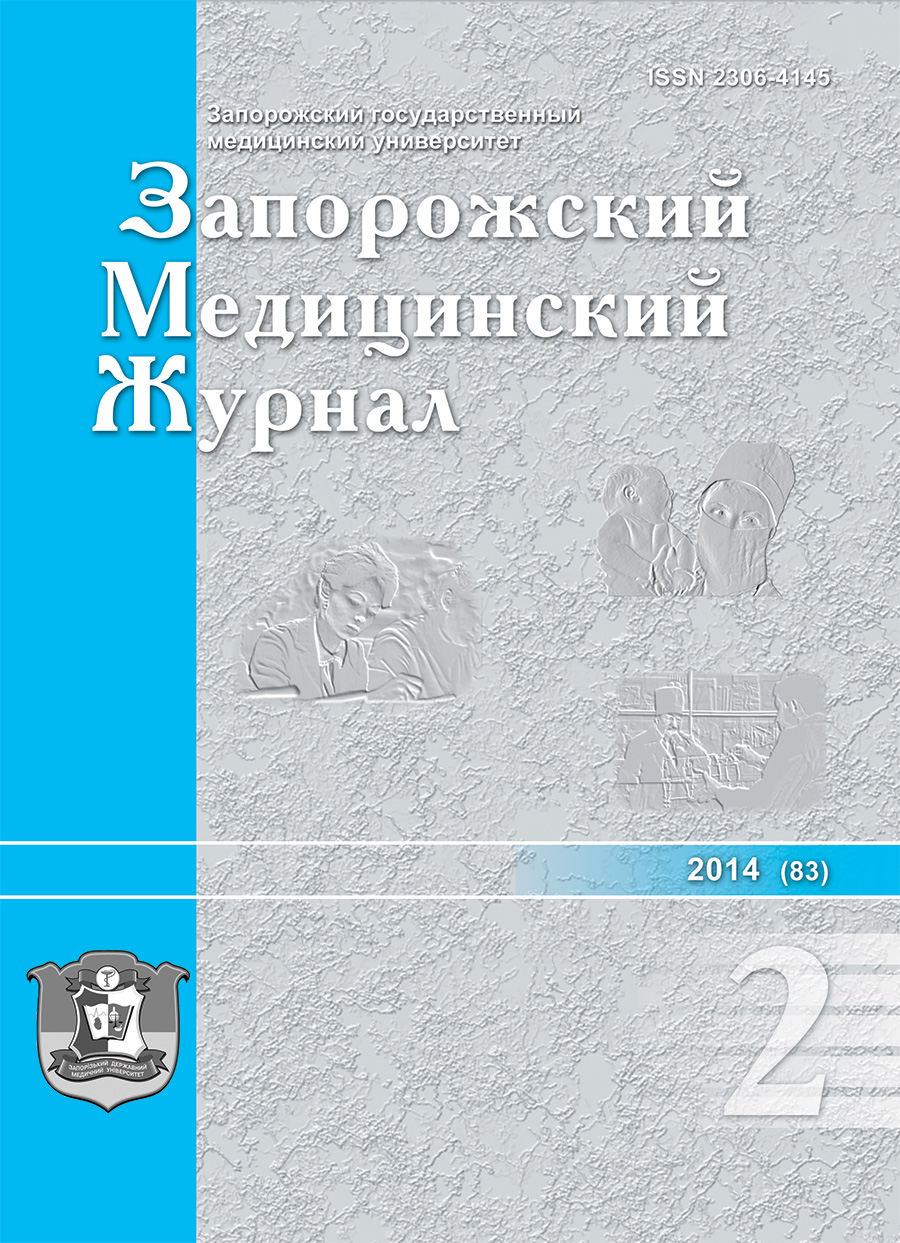Rational strategy of pharmacotherapy of patients with community-acquired pneumonia at elderly and senil eage
DOI:
https://doi.org/10.14739/2310-1210.2014.2.25323Keywords:
community-acquired pneumonia, combined antibacterial therapy, retrospective analysisAbstract
Introduction. Nonhospital pneumonia is the most common acute infectious infections disease of the lower respiratory tract. The incidence of the community-acquired pneumonia in Ukraine is 3 - 11 cases per 1,000 in adults per year and is the highest among the elderly and old patients. According to the foreign epidemiological studies, the incidence of nonhospital pneumonia in persons of young and middle-aged adults (> 18 years) is 1 - 11,6 %; in the older age groups - 25 - 44 %. Mortality from nonhospital pneumonia without concomitant diseases is also the lowest (1-3 %) in those young and middle age. In patients over 60 years of age, if there is a serious comorbidity and in cases of severe nonhospital pneumonia, this figure reaches 15-30 %. To improve treatment outcome in nonhospital pneumonia and cost optimization in recent years a number of international and national recommendations were proposed. This help doctor to choose the most rational strategy for the management of patients in a specific clinical situation.
The aim of the study. Retrospective analysis of case histories of patients older than 60 years with nonhospital pneumonia treated in the therapeutic department during the period from September 2010 to May 2013. Assessment of the quality of medical care and the practice of the appointment systemic antibacterial therapy in accordance with modern standards and quality indicators.
Material and methods. Were selected 66 case histories of patients with nonhospital pneumonia, men were 41 people (62.1%), and women - 25 (37,9%), the average age was 69,5 ± 8.1 years. Based on the goal of the research objectives were: to assess the quality of medical aid for patients with nonhospital pneumonia and frequency of antibacterial therapy for patients with nonhospital pneumonia in a particular situation.; explore the features of administration of antibiotics at the start of therapy of the community-acquired pneumonia and compliance choice of antibiotic therapy to the national guidelines. Statistical data processing was carried out in the system of the SPT Statistica, version 8.0.
Results and discussion. All hospitalized patients received systemic antibiotic therapy. Frequency assignments AMP patients at the outpatient stage was 21 %. Quick antibacterial therapy was in 15.1 % (n=10) cases, mainly in patients from 60 to 68 years, with no complications. Starting antibiotic therapy in most cases was chosen according to the national treatment guidelines. High efficiency of the combined antibacterial therapy compared with mono - antibacterial therapy was noted.
Conclusions:
The most effective antibacterial treatment was expected from the triple combination of antibacterial drugs: cephalosporins 3rd generation + fluoroquinolones + macrolides.
The study has also noted the high relevance of the ongoing antibiotic therapy with existing national guidelines for management of patients with nonhospital pneumonia (89,9 %), which is comparable with the commitment to comply with the recommendations in the clinics of Europe and the USA.
References
Bereznyakov I.G Antibacterial pneumonia in patients with community-acquired pneumonia in the hospital Сlinical immunolog. Allergology. Infektology 2008;5: 22-26.
Chuchalin A.G , Sinopalnikov AI Kozlov RS etc. Vnebolnichnaya pnevmoniya u vzroslikh. Praktycheskie rekomendatsii po diahnostike, lecheniu I profilaktike. [Community-acquired pneumonia in adults . Practical guidelines for the diagnosis , treatment and prevention]. Moscow, 2010. 106 p.
Lukashenko E.P, Chikin S.Y, Cherniayev A.L. Retrospective analysis of the management of patients in hospital CAP. Problems of clinical medicine, 2008; 4 (16): 35-40.
Mandate Mіnіsterstva receptionists Zdorov'ya Ukrainy number 128 od 19.03.2007. Pro zatverdzhennya klіnіchnih protokolіv nadannya medichnoi dopomohy zi spetsіalnosty "Pulmonologіya". [On approval of clinical protocols of medical care in the specialty "Pulmonary"].Kyiv, 2007.146 p.
Kozlov R.S, Pertseva T.S, Dmitrichenko V.V. Community-acquired pneumonia: diagnosis standards, modern antibiotic therapy. Ukrainian Medical Journal 2011; 6 (85):59 -62.
Official site of the United Nations [Electronic resource] URL:http www.un.org/Russian
Rachina S.A, Zaitsev A.A Ed A.I Sinopalnikova, R.S Kozlov. Farmakoepіdemіologіcheskіe doslіdzhennia antibakterіalnih preparatіv pri pozalіkarnyanih іnfektsіyah dihalnih shlyahіv. Pozalіkarnyanih іnfektsії dihalnih shlyahіv: dіagnostika ta lіkuvannia. Kerіvnitstvo for lіkarіv [Pharmacoepidemiological study of antimicrobials in community-acquired respiratory tract infections. Community-acquired respiratory tract infections: diagnosis and treatment. Guide for Physicians.]. Moscow, 2008. P.254 -271.
Rachina S.A, Kozlov R.S., Shal E.P and etc. The analysis of antibiotic therapy for hospitalized patients with community-acquired pneumonia in the various regions of the Russian Federation: Lessons multicenter pharmacoepidemiological study. Clin. Microbiology. Antimicrobial. chemotherapy 2009; 1(11):66 -78.
Romanov N.E. Community-acquired pneumonia in patients with chronic heart failure : incidence and risk factors. Clinical. Gerontology 2006’;8:30-35.
Brar N.K. Management of community-acguired pneumonia: a review and update Ther. Adv. Respir. Dis. 2011;5: 61-78.
Mortensen.EM, Restrepo M., Anzueto A., Pugh J. Effects of guideline-concordant antimicrobial therapy on mortality among patients with community-acguired pneumonia. Am. J. Med. 2004;117.
Downloads
How to Cite
Issue
Section
License
Authors who publish with this journal agree to the following terms:
Authors retain copyright and grant the journal right of first publication with the work simultaneously licensed under a Creative Commons Attribution License that allows others to share the work with an acknowledgement of the work's authorship and initial publication in this journal. 
Authors are able to enter into separate, additional contractual arrangements for the non-exclusive distribution of the journal's published version of the work (e.g., post it to an institutional repository or publish it in a book), with an acknowledgement of its initial publication in this journal.
Authors are permitted and encouraged to post their work online (e.g., in institutional repositories or on their website) prior to and during the submission process, as it can lead to productive exchanges, as well as earlier and greater citation of published work (See The Effect of Open Access)

